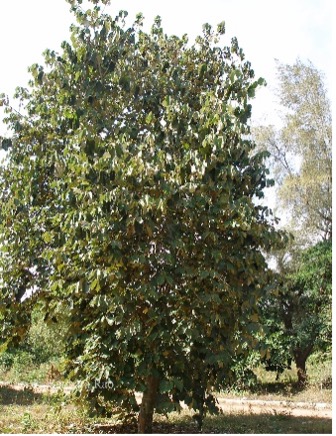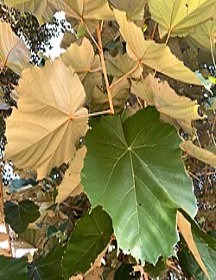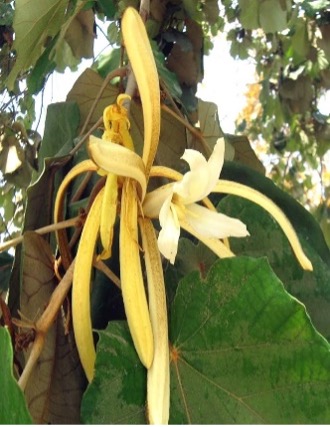HERBAL GARDEN
Vivek college of Ayurvedic Sciences & Hospital Bijnor UP
कनक चंपा




Classification
Synoyms
Kanak Chapa (Sanskrit)
Muchukunda
Karnikar
Maple-leaf Bayur
Evening Flower Tree
Habit
Medium to large deciduous tree
Habitat
Native to India and Southeast Asia. Found in tropical and subtropical regions, often planted as ornamental or avenue trees. Grows well in warm climates with moderate rainfall.
Morphology
- Tree grows up to 30 meters in height.
- Leaves: Large, broad, maple-shaped, rough on upper surface, silvery beneath.
- Flowers: Large, fragrant, creamy-white, blooms at night.
- Fruits: Woody, capsule-like, elongated.
- Bark: Greyish-brown and rough.
Chemical Composition
Tannins, Steroids, Flavonoids, Glycosides, Alkaloids, Saponins
Guna-Karma
Rasa- Kashaya, Tikta
Guna- Laghu, Ruksha
Virya- Sheeta
Vipaka- Katu
Karma- Vranaropana, Shothahara, Stambhana, Jwaraghna, Dantya, Rakta-stambhaka
Doshakarma- Pitta-Kaphahara
Medicinal uses
Leaves used in wound healing, skin diseases and burns.
Leaf juice helpful in bleeding disorders.
Flower extract is used in fever and inflammation.
Bark and leaves act as astringents, useful in diarrhea and dysentery.
Gargles with decoction used in oral ulcers and gum problems.
Used traditionally in eye diseases, leucorrhoea and menstrual disorders.
Useful Part
Leaves, Flowers, Bark
Doses
Leaf juice (Swarasa): 10–15 ml
Decoction (Kwath): 20–50 ml
Powder (Churna): 2–5 g
Important Formulation
Kanak Pushpi Taila
Shloka
कनकचम्पा शुभा शीतलां कषायां रुचिप्रदाम्।
रक्तपित्तव्रणं हन्ति कुष्ठशोथारुचिप्रदाम्॥
Hindi Name
कनक चंपा / मुचुकुंद
English Name
Kanak Champa / Dinner Plate Tree
Botanical Name
Pterospermum acerifolium Willd.
Family
Malvaceae